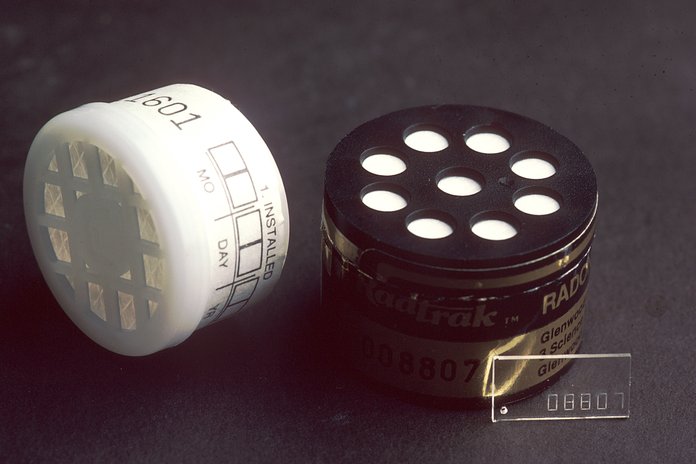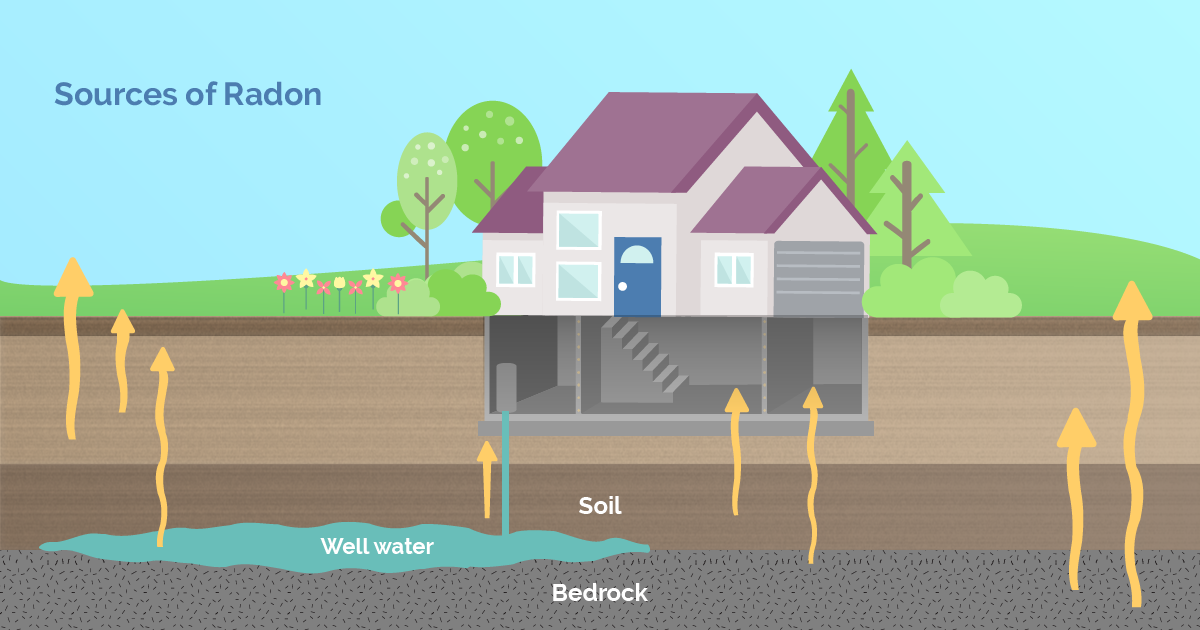Everything you require to learn about radon
Where is Radon most commonly found?
There's no single method that fits all radon removal system needs. Common techniques include: Sub-slab depressurization, where suction pipes are inserted through the floor or concrete slab into the concrete slab below the home. A radon vent fan then draws out the radon gas and releases it into the air outside.
Moreover, the conditions in below ground mines were really different from those in houses. In addition to radon gas, miners were revealed to dirt and also other substances.
How much does it cost to fix radon in house?
The cost of a mitigation system may vary according to the home's design, size, foundation, construction materials and the local climate. Radon reduction systems average costs nationally are $1,200 with a range from $800 to $1500 common depending on house and market conditions.
BREWSTER, NY-- Radon is the leading root cause of lung cancer cells in the USA amongst non-smokers. For those who smoke, radon greatly raises the cancer danger.
Does seller have to fix radon?
It's very likely that your future buyer will make you fix the radon problem before they will purchase the home. It's good to just take care of it during your real estate deal. Sometimes the seller pays for it all, sometimes they fund a credit and sometimes there is a split.
Radon typically does not present a health threat outdoors because it is watered down in the open air. Radon can, however, develop to harmful levels inside a residence. One out of every 15 homes is estimated to have high radon degrees. Radon is the 2nd leading reason for lung cancer cells (after smoking cigarettes) in the United States, causing more than 20,000 lung cancer fatalities yearly.
Radon address search
What do you do if your house has radon?
Radon can seep into any home that is in contact with the ground. It is undetectable unless you perform a radon test. It is the second leading cause of lung cancer and according to the EPA and CDC, it kills more than 20,000 annually. It is not something you want in the home you are buying.
This normally taking place odor-free gas asserts the lives of about 21,000 Americans each year, according to the Epa (EPA). The EPA marks January as National Radon Activity Month as well as urges all Americans to secure their wellness by evaluating their homes, colleges and various other structures for radon. It has actually been recognized considering that the very early twentieth century that underground miners revealed to high degrees of radon gas have a boosted threat of lung cancer. However, this kind of projection involves a number of limitations and presumptions. Most notably, miners had much higher radon direct exposures, and also most of miners were smokers.
17.8% (1 in 6) property buildings in our survey area surpassed 200 Bq/m3, as well as more than half gone beyond 100 Bq/m3. Evaluation suggests that 15-- 16.6% of all lung cancers in the region are radon-attributable38,39, representing a significant disease and financial burden. It deserves noting that the 2010 Canadian Build Code-- took on variably by Canadian Provinces between 2010 and 2016-- includes the addition of a sub-slab depressurization radon mitigation tool 'rough-in' to the structure. Whilst not an energetic radon reduction step at build, this should, theoretically, make it easier for Canadians to subsequently install reduction tools.

Why is radon bad for you?
Radon produces a radioactive dust in the air we breathe. The dust is trapped in our airways and emits radiation that damages the inside of our lungs. This damage, like the damage caused by smoking, increases our risk of lung cancer.
Will opening windows reduce radon?
Opening windows improves air circulation and ventilation, helping move radon out of the house and mixing radon-free outside air with indoor air. Opening basement windows helps reduce negative air pressure, diluting radon with clean outdoor air.
How long do you have to be exposed to radon before it becomes a problem?
Radon is a radioactive gas and exposure to it causes 21,000 lung cancer deaths per year—only smoking causes more. Because you can't see, smell or taste radon, it's important to periodically test the air in your home. Believing you live in a region not affected by radon is just one of the myths about this deadly gas.
How do I know if my house has radon?
In fact, you're probably breathing it in every day, even if it's at a low level. However, you can't tell if you're Check over here breathing it in at a high level. The danger in radon exposure is that you can't see it, taste it, or smell it. And you won't have any symptoms to alert you.
- The Canadian standard for radon in indoor air for homes is 200 Becquerels per cubic metre (200 Bq/m3).
- Over the years, data that tracks radon degrees suggests that a big percent of Pennsylvania residences have a severe radon issue.
- Radon gas threatens, as well as if the trouble goes without treatment, the radon focus continues to rise inside your house.
- Radon gas enters your residence or various other property from the outdoors, and gradually, progressively gathers to harmful levels that can lead to a boosted danger of lung cancer cells or respiratory system concerns.
What is radon in the home?
Radon is a radioactive gas that has been found in homes all over the United States. It comes from the natural breakdown of uranium in soil, rock, and water and gets into the air you breathe. Radon typically moves up through the ground to the air above and into your home through cracks and other holes in the foundation.
What causes radon?
Being exposed to radon for a long period of time can lead to lung cancer. Radon gas in the air breaks down into tiny radioactive elements (radon progeny) that can lodge in the lining of the lungs, where they can give off radiation. This radiation can damage lung cells and eventually lead to lung cancer.
Is it hard to sell a house with radon?
Fortunately, it's not hard to sell a house with radon, provided that you alert potential buyers and mitigate the problem, say Brian Thomas, a top real estate agent in the Denver, Colorado area, with 16 years of experience. “For as much fear and uncertainty as radon causes, there's an easy fix.”

How do I make my house safe from radon?
Install a layer of gas-permeable aggregate, such as four inches of gravel, beneath the slab or flooring system of your home if you don't https://www.slideserve.com/fotlanlt96/just-how-radon-gas-endangers-people-in-their-own-residences-powerpoint-ppt-presentation have a crawlspace. Cover this layer or your crawlspace floor with plastic sheeting to stop radon gas from moving past that level and into your home.
How effective is radon remediation?
The Surgeon General and the EPA recommend testing for radon and reducing radon in homes that have high levels. Fix your home if your radon level is confirmed to be 4 picocuries per liter (pCi/L) or higher. Radon reduction systems work. Some radon reduction systems can reduce radon levels in your home by up to 99%.
How often should you test for radon?
Living pattern changes Whenever there is a change in your home, you should perform local radon testing. It's also recommended that you test your home for radon at least twice a year too. If your tests come back unusually high, then you should order one or two more tests so that you can compare the results.
Does home insurance cover radon mitigation?
homeowners insurance and radon remediation While home insurance is designed to financially protect you from sudden and unexpected perils such as fire or theft, it typically won't cover things that can be considered related to home maintenance like radon testing and mitigation.
Is radon only in the basement?
Radon is completely odorless as well as being invisible. Because it is often found unexpectedly in basements, some people mistakenly believe that it only occurs in basements. Most commonly homes with basements are suspect for having higher radon levels.
How common is radon in a home?
It's common: About 1 in every 15 homes has what's considered an elevated radon level. The gas is odorless and invisible, says the EPA, and it causes no immediate symptoms, so the only way to know if your home is affected is by testing your individual residence.
Is radon something to worry about?
The average home has about 1.3 pCi/L of radon. Such levels aren't enough to worry about, but under the right conditions, they could make you sick. According to the EPA, a nonsmoker who was exposed to average levels of radon for a lifetime would have a 1 in 500 risk of developing lung cancer.
Should I buy a house with high radon?
EPA RECOMMENDS: If you are buying or selling a home, have it tested for radon. For a new home, ask if radon-resistant construction features were used and if the home has been tested. Fix the home if the radon level is 4 picocuries per liter (pCi/L) or higher.
Is a radon level of 5 bad?
Safe radon levels. The best radon level measurement would be zero. The average global outdoor radon level varies between 5-15 Bq/m3, equal to 0.135-0.405 pCi/L. For every 99.9 Bq/m3, or every 2.7 pCI/L increase in long term radon exposure, lung cancer risk rises 16 percent.
Can I install my own radon mitigation system?
In most cases, pros charge about $1,500 to install a radon mitigation system, but you can do it yourself for only about $500 in materials. So if you're fairly handy and have some carpentry, plumbing and electrical skills, you can install your own system in a weekend and save yourself a thousand bucks!